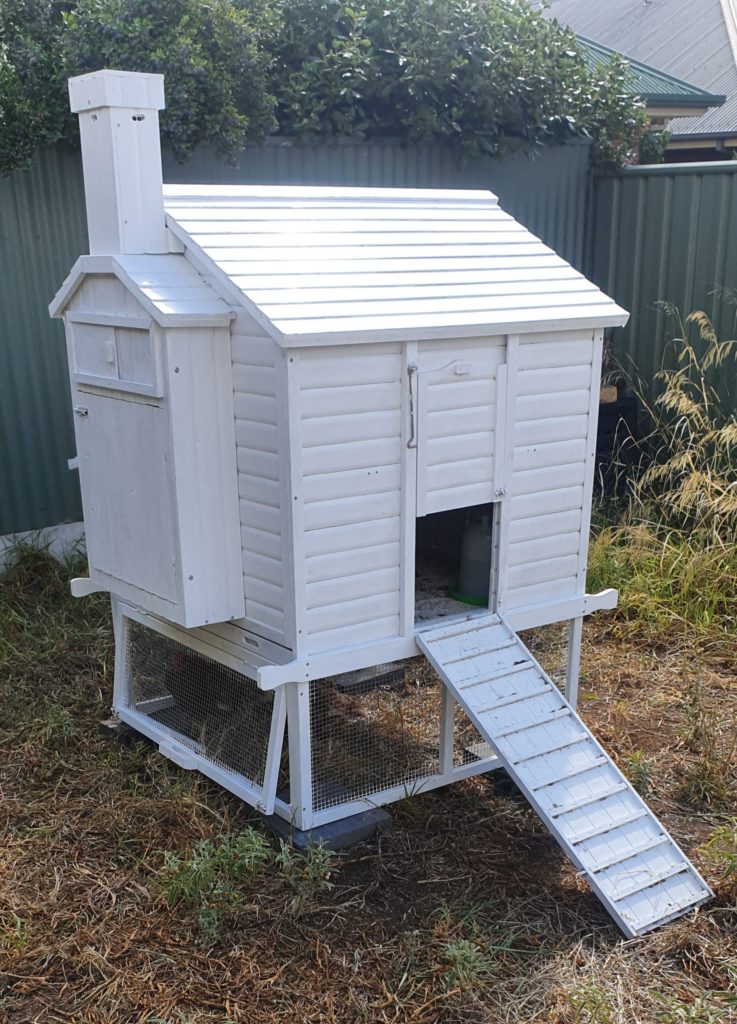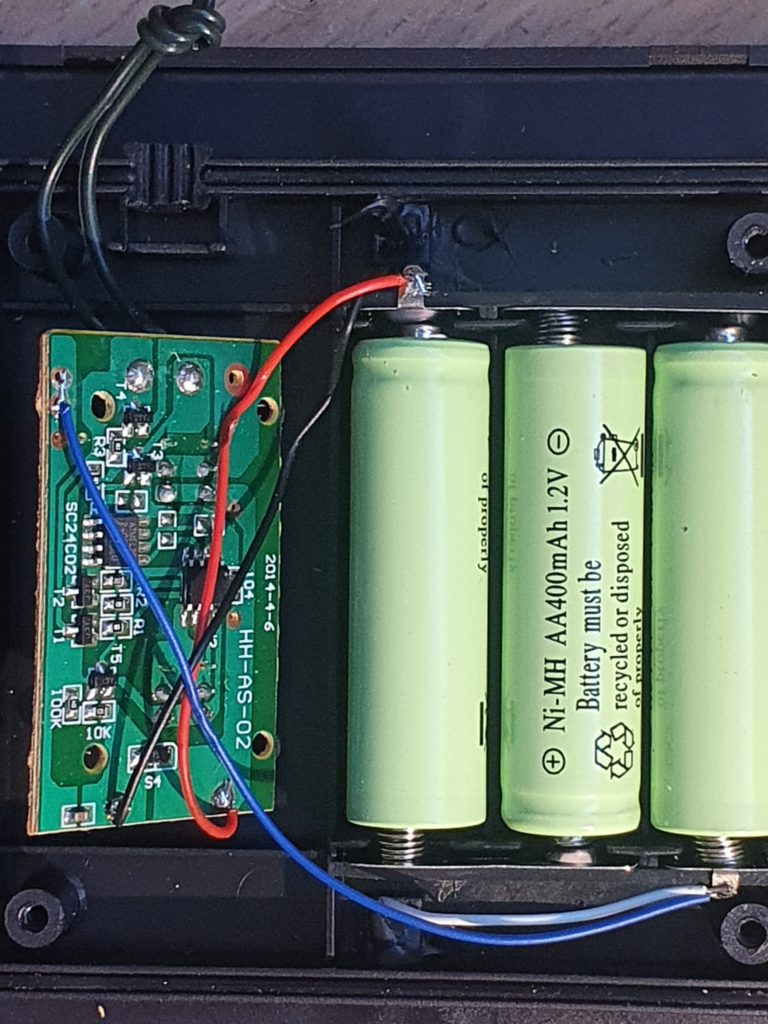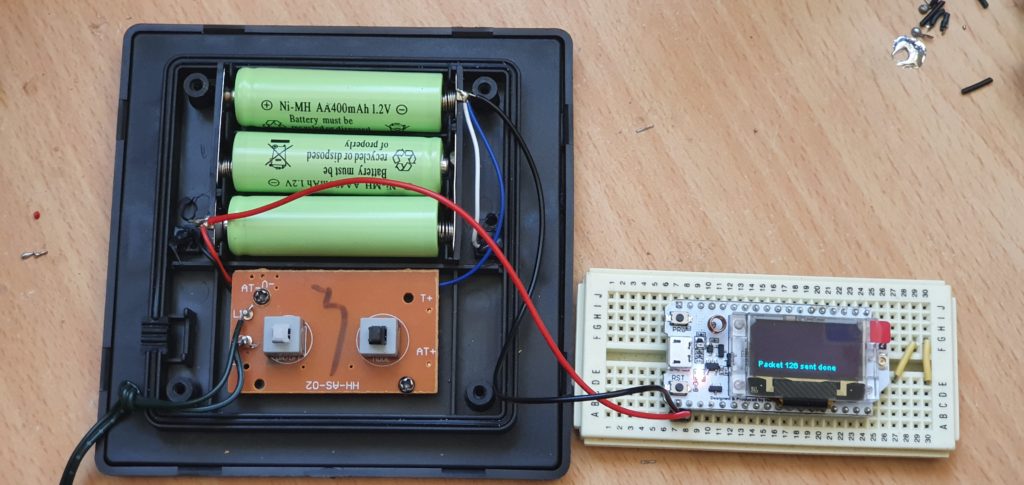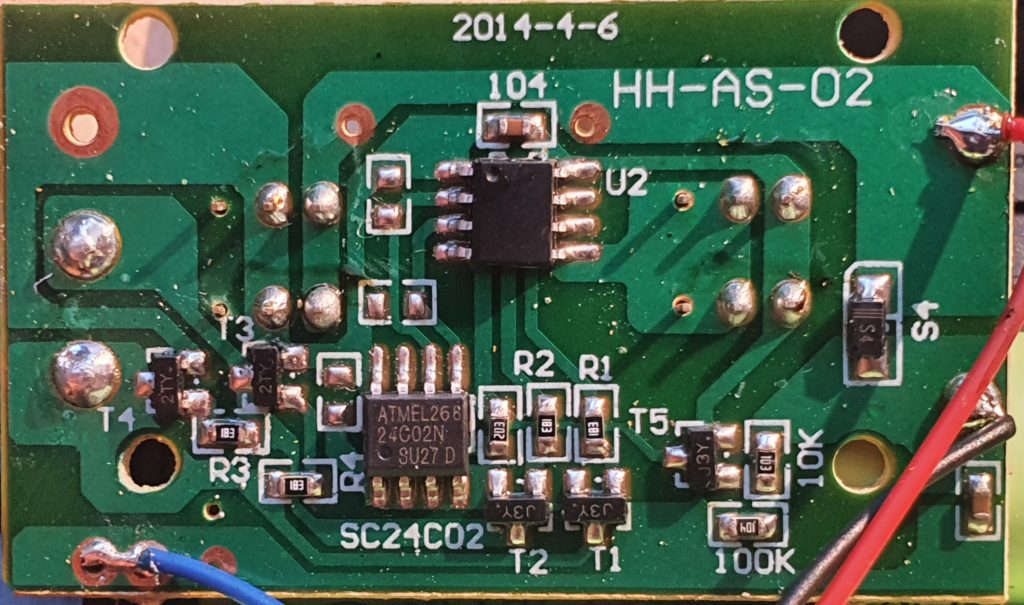
After two years of delay, our household now has a chicken coop and five chickens (Bigbird, Tiny, Rose, Flame and Raptor).
Part of the plan other then getting the birds to produce eggs, eat garden waste, poop and generally scratch around, was to use this opportunity to turn their humble home into a Super Chicken House..
Currently, they need to be shut in and let our every day which which is not much of a chore but still needs to be done. Also, it would be nice to know when there are eggs to be collected, and if they need more water or food. Some temperature monitoring might also be ‘cool’ as well as air quality sensing.
As an acknowledgement to some other great work being done on home automation, the name and logo of the project had been blatantly copied and modified from Jon Oxer’s SuperHouse Automation business. (Does this classify as Fan art?)

Solar Power
I was struggling to find a reasonable cheap way to get power to the SuperCookHouse. I had some sets of solar powered garden fairy lights, several different models to experiment with. They all had internal batteries which charged up during the day and then automatically switched on at night.
The smaller units had multiple outputs on for their LED’s (three wires) which allowed them to have some interesting twinkle modes. They were cheaper, but they only contained a single Ni-MH battery. The larger unit had three batteries (see image below) but only had a two wire LED output. The cases themselves also had some rubber seals for waterproofing.

In the larger unit the output from the charged batteries was 4.1V. This proved sufficient to power up a Heltec WiFi LoRa 32 (V2) board which I had at hand. This was connected directly across the batteries.

This connection bypasses the power switch and the flashing circuit of the solar panel board. The batteries should still be able to be charged via the solar panel.

Briefly looking at the control board, with some hackery, it should be possible to make use of the on/off switch to control external power, but two other modifications would also need to be made;
- bypass the flashing circuit
- disable the ‘power off’ function when the solar panel is in light.
This work has been left to a time in the future.
Update: The batteries powered the module, as it was without any sensors, for about three hours.
Update 2: It looks like the chip SC24C02 (ATMEL268 24C02N) is an EEPROM 2-wire 2K memory chip (Datasheet). Pins 5 and 6 are the Serial Data (SDA) and Serial Clock Input (SCL) respectfully, which are routed up to pins 2 and 3 on the other (currently unknown) package.
